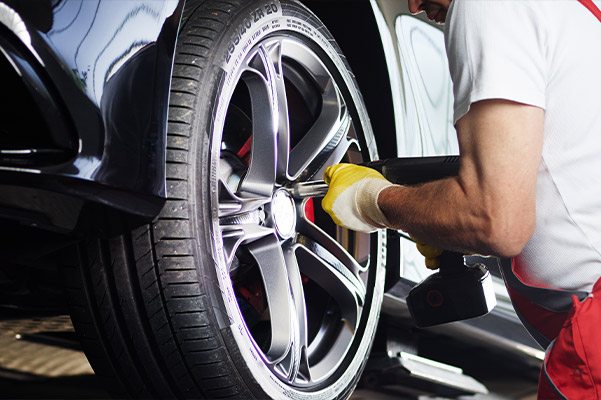Tire Fixing Myths Debunked: Dividing Fact From Fiction
In the realm of automobile maintenance, tire repair work holds a substantial place, yet it is often shrouded in myths and misunderstandings that can lead to confusion for vehicle proprietors (tire shop near me). From the mistaken beliefs surrounding patching versus connecting a punctured tire to the effectiveness of numerous tire sealants, there are several crucial areas where quality is needed to make informed choices.
Common Tire Repair Misconceptions
Resolving common misconceptions bordering tire fixing is crucial for keeping road safety and security and prolonging the long life of your car's tires. One usual myth is the idea that a punctured tire is past repair and needs to be changed totally. Actually, several punctures can be successfully repaired by an expert, adhering to industry requirements. It is vital to comprehend that not all slits are produced equivalent; while some may undoubtedly call for a tire replacement, the bulk can be securely fixed.
One more misconception is the idea that a DIY tire repair service package is a sufficient option for all tire concerns. While these packages can be convenient for temporary fixes in emergencies, they are not a long-term service and might not attend to the underlying trouble (morris tire). Seeking the experience of a qualified tire specialist is always advised to make certain the safety and security and honesty of the tire

Can You Repair a Punctured Tire?
Fixing a punctured tire is a common technique in the automobile industry, commonly brought out by expert technicians adhering to details guidelines and criteria. Punctures located on the walk area of the tire are generally repairable as long as they are within a particular dimension limitation and do not affect the tire's structural honesty.
It is very important to note that penetrates near the sidewall or shoulder of the tire are usually not repairable due to safety concerns. Such locations undergo substantial tension and flexing, making fixings unreliable and potentially unsafe. In addition, if the puncture is as well huge, exceeding the suggested repairable dimension, or if the tire reveals indications of internal damages, it is safer to change the tire entirely.
The Truth About Patching Vs. Connecting
When thinking about the repair work of a pierced tire, comprehending the distinctions between patching and connecting is vital for making informed decisions regarding tire upkeep and safety. Covering entails repairing the tire from the within, where a patch is related to cover the puncture. This technique is taken into consideration more reliable and resilient as it addresses the damage internally, minimizing the risk of air leakage and more tire damage. On the other hand, connecting is a fast fix that entails inserting a rubber link into the pierced area from the see page exterior. While more plugging is hassle-free and can be done without removing the tire from the edge, it is generally thought about a short-lived option and might not offer the very same degree of toughness as a spot.
Myth: All Tire Sealants Are Effective

When picking a tire sealant, think about variables such as the dimension of punctures it can efficiently fix, compatibility with tire pressure tracking systems (TPMS), and whether it is secure for the tire product. Remember, while tire sealants can be valuable in emergencies, they are not an alternative for appropriate tire treatment and upkeep.
Best Practices for Handling Flat Tires
Taking review into account the varying effectiveness of tire sealants, recognizing best methods for taking care of blowouts is critical for maintaining roadway safety and security and lorry performance. When coming across a blowout, the primary step is to safely pull over sideways of the roadway, far from approaching web traffic. Activate danger lights to notify various other motorists of your circumstance. It is recommended to apply the emergency brake and location wheel wedges under the tires to avoid the lorry from rolling. Next off, consult your automobile's handbook to find the spare tire, jack, and lug wrench. Before trying to transform the tire, make certain that the location is flat and stable. Loosen the lug nuts, elevate the automobile with the jack, eliminate the lug nuts and flat tire, and change it with the extra tire. Tighten up the lug nuts in a star pattern, lower the lorry, and firmly tighten the lug nuts. Finally, store away the puncture, tools, and equipment, and bear in mind to inspect the spare tire's stress occasionally. Following these ideal methods can help you manage punctures effectively and securely.
Verdict
In final thought, it is very important to separate fact from fiction when it pertains to tire repair misconceptions. Understanding the fact about covering vs. connecting, the performance of tire sealants, and finest techniques for dealing with blowouts can help make sure the safety and durability of your tires. By unmasking usual misconceptions and complying with proper repair work standards, you can make enlightened decisions when it pertains to maintaining the wellness of your vehicle's tires.